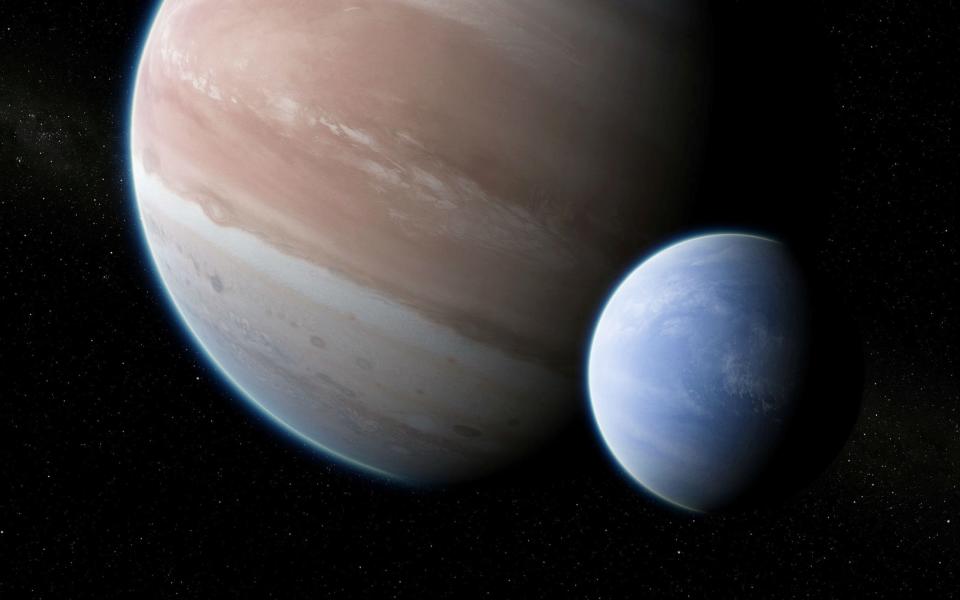Hubble spots first-ever alien moon outside our solar system (and it's huge)

Astronomers have spotted the first-ever ‘exomoon’ outside our solar system – a moon the size of Neptune, orbiting a star 8,000 light years away.
Both the huge moon and its even larger planet (several times the size of Jupiter) lie within the star’s habitable zone – meaning life could flourish there.
Using data from the Hubble Space Telescope and the Kepler Space Telescope, astronomers found ‘compelling’ evidence for the moon, orbiting the planet Kepler-1625b.
Astronomers have hunted for ‘exoplanets’ – planets outside our solar sytem – for decades, but have never spotted an ‘exomoon’, until now.

The candidate moon, with the designation Kepler-1625b-i, is unusual because of its large size – comparable to the huge, icy planet Neptune in our solar system.
Lead author Alex Teachey said, ‘This may yield new insights into the development of planetary systems and may cause astronomers to revisit theories of how moons form.’
MORE: UK blames Vladimir Putin’s Russian spies for series of ‘reckless’ global cyber attacks
MORE: Former Madeleine McCann detective says missing girl could still be alive and still in Portugal
Like its moon, Kepler-1625b is also bigger than its counterparts in the solar system. The exoplanet is a gas giant, several times more massive than Jupiter.
It orbits its parent star at a distance similar to the distance between the Sun and Earth, which puts it – and its candidate moon – at the inner edge of the habitable zone of the star system.
To find evidence for the existence of the exomoon, the team observed the planet while it was in transit in front of its parent star, causing a dimming of the starlight.
David Kipping, the study’s second author, said, ‘We saw little deviations and wobbles in the light curve that caught our attention.’

 Yahoo News
Yahoo News 
